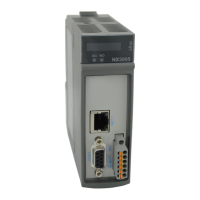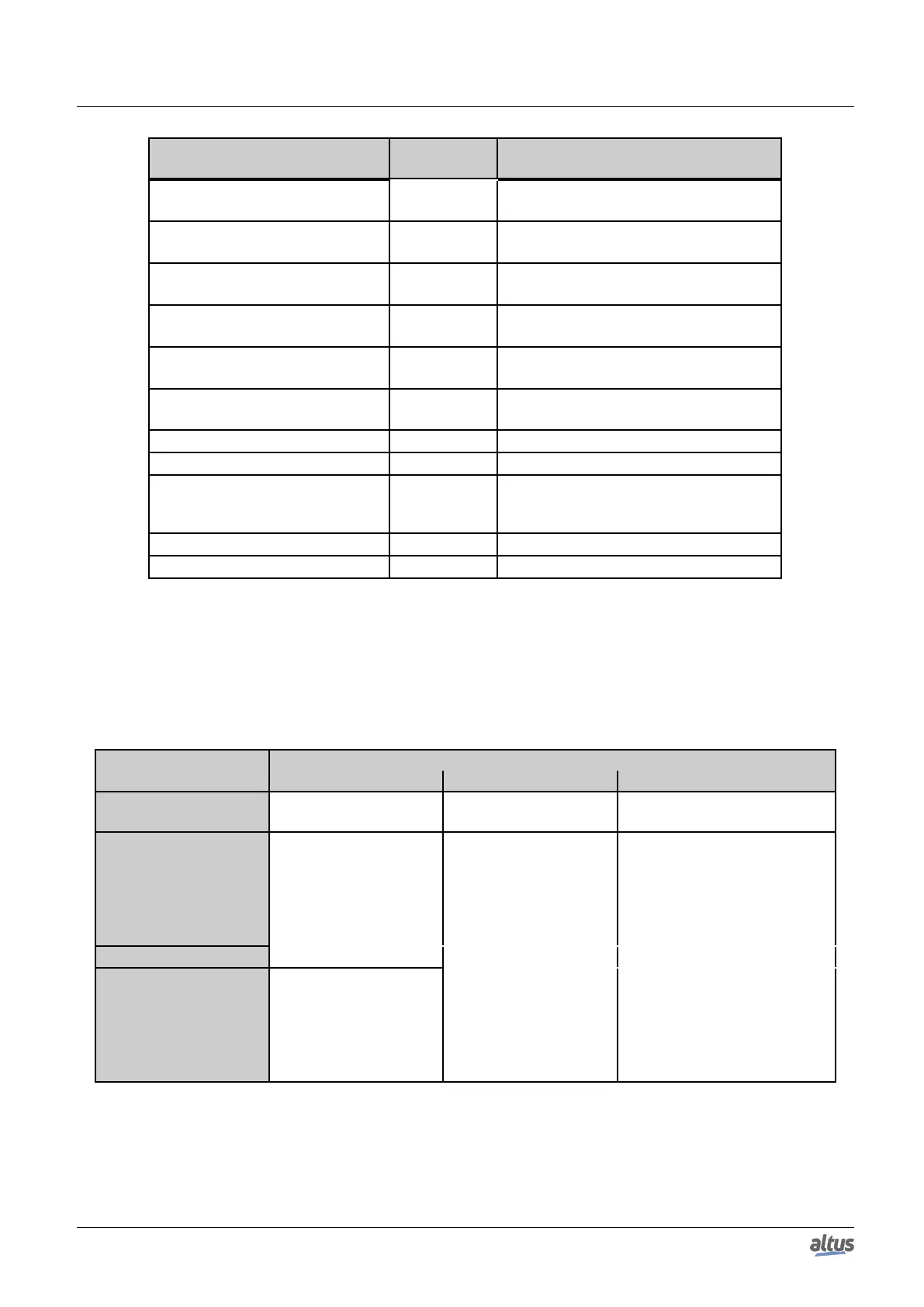5. CONFIGURATION
Diagnostic variable of type
T_DIAG_IEC104_SERVER_1.*
Size Description
tClient_X.eConnectionStatus.
CONNECTED
Connected client. ENUM value (2)
tClient_X.tQueueDiags.
bOverflow
BOOL Client queue is overflowed
tClient_X.tQueueDiags.
wSize
WORD Configured queue size
tClient_X.tQueueDiags.
wUsage
WORD Events number in the queue
tClient_X.tQueueDiags.
dwReserved_0
DWORD Reserved
tClient_X.tQueueDiags.
dwReserved_1
DWORD Reserved
tClient_X.tStats.wRXFrames
WORD Number of received frames
tClient_X.tStats.wTXFrames
WORD Number of sent frames
tClient_X.tStats.wCommErrors
WORD
Communication errors counter, including
physical layer, link layer and transport
layer errors.
tClient_X.tStats.dwReserved_0
DWORD Reserved
tClient_X.tStats.dwReserved_1
DWORD Reserved
Table 150: IEC 60870-5-104 Server Diagnostics
5.5.14.8. Commands Qualifier
The standard IEC 60870-5-104 foresee four different command qualifiers for the objects Single Command, Double Com-
mand and Regulating Step Command, all supported by the Nexto Server.
Each object type has a specific behavior to each command qualifier, as can be seen on the table below.
Qualifier Protocol IEC 60870-5-104 object type
Single Command Double Command Regulating Step Command
No additional defini-
tion (default)
Same behavior of persis-
tent qualifier.
Same behavior of short
pulse qualifier.
Same behavior of short pulse
qualifier.
Short pulse duration
Requires command in-
terception to application
treatment. Other way
it will return a nega-
tive acknowledge mes-
sage (fail).
Requires command in-
terception to application
treatment. Other way
it will return a nega-
tive acknowledge mes-
sage (fail).
Requires command interception
to application treatment. Other
way it will return a negative ac-
knowledge message (fail).
Long pulse duration
Persistent output
The output is going to
be on or off and that
will remain until new
command, according to
value (ON or OFF) com-
manded by the client.
Table 151: IEC 60870-5-104 Server Commands Qualifier
Note:
Command Interception: For further information about commands interception of IEC 608705-104 clients, consult section
Interception of Commands Coming from the Control Center, implemented through CommandReceiver function block.
212

